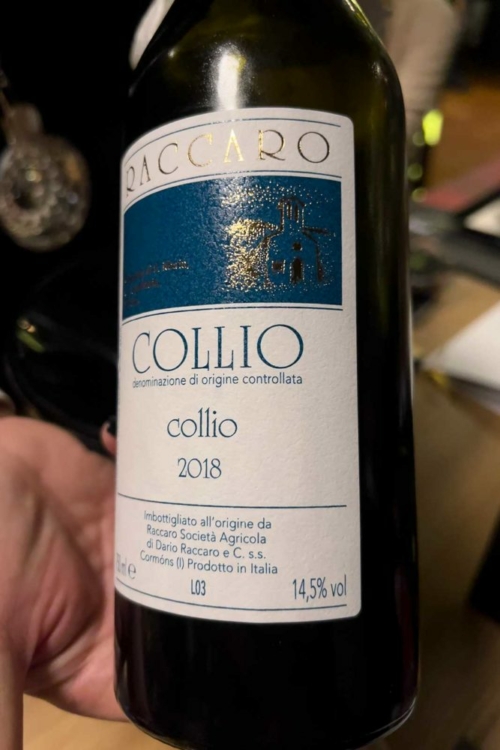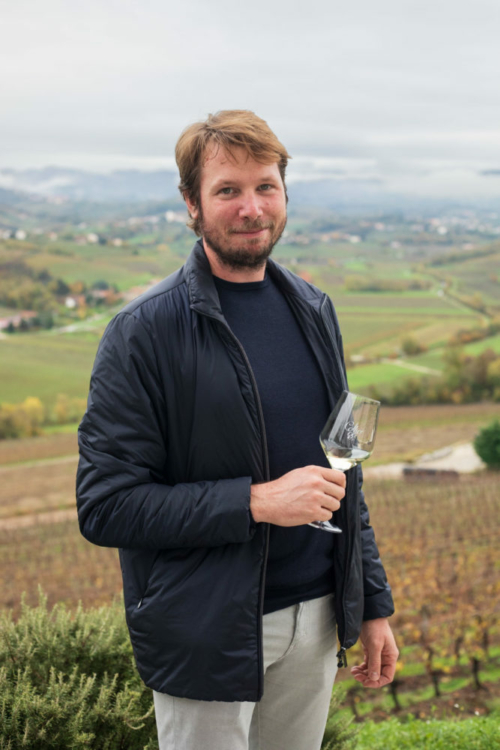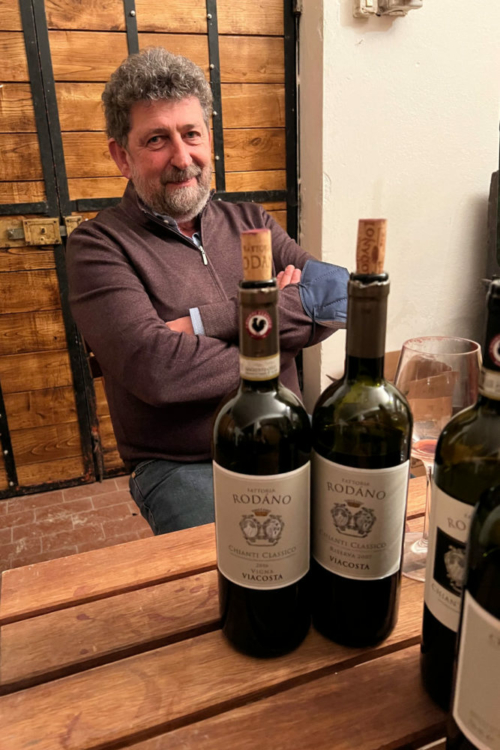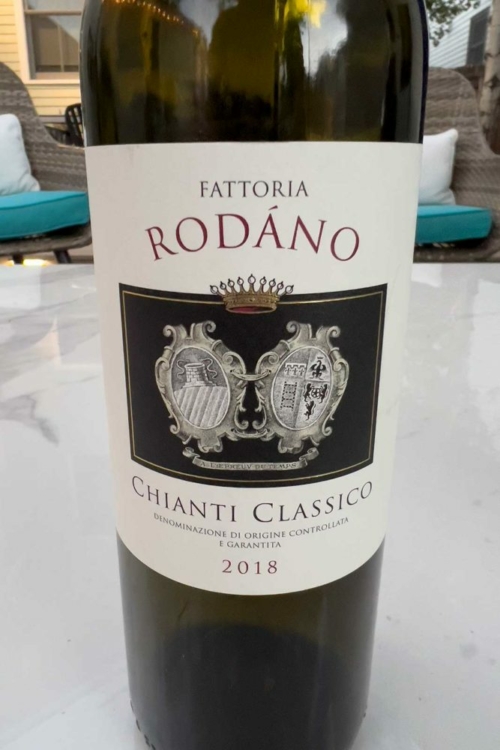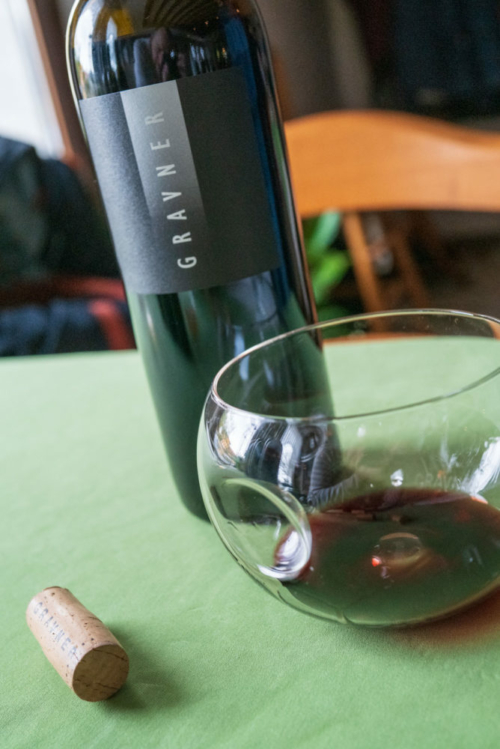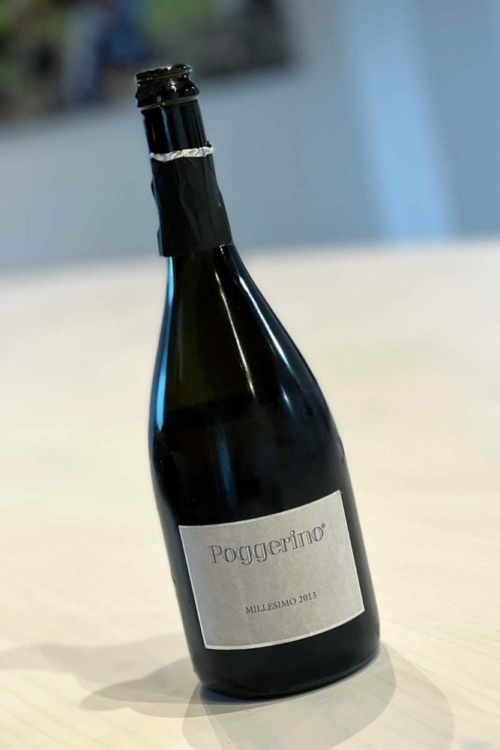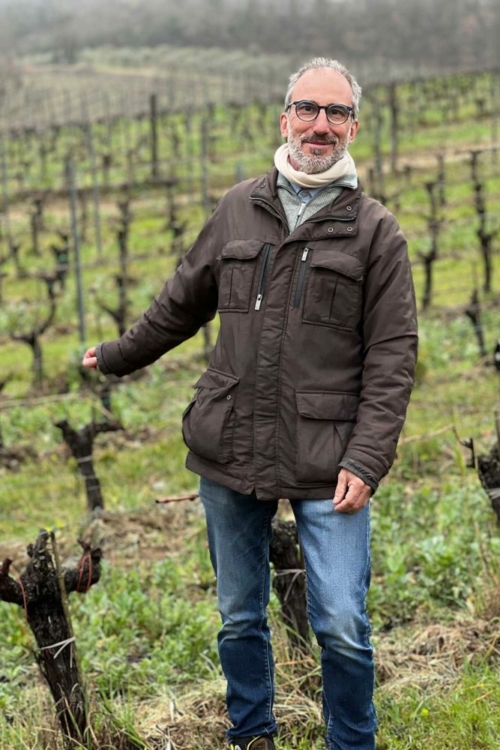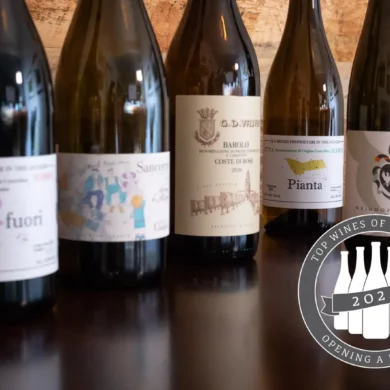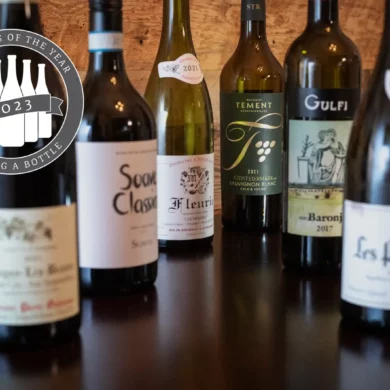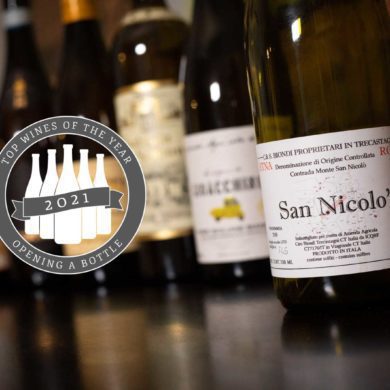It is time for the Top 12 Wines of 2022, one of the most challenging pieces to write each year. The issue isn’t so much picking 12 wines from the hundreds tasted. The issue is keeping the exercise relevant for both writer and reader.
We open a bottle of wine to communicate with our senses, our food and with each other. I never want my review writing to lose that spirit.
Whether I have hit that mark or not is for you to decide.
In terms of staff, we are a little publication. In fact, we are so little that 95% of the time the phrase “I am a little publication” is more accurate. Opening a Bottle has never been a rival of Wine Spectator or Wine Enthusiast. “We” likely never will be. In fact, one reason I started this blog-turned-publication back in 2014 was in reaction to their wine-review writing. Wine Spectator and Wine Enthusiast’s approach — tens of thousands of wines reduced to a blur of tasting notes and a narrow range of numbers — never resonated with me. I figured there were others out there who felt the same. And wine blogs at the time, by and large, were just too raa-raa and scattershot in their coverage.
Things have changed a lot since 2014, with the landscape fragmenting into scores of specialist websites such as this one. Want to immerse yourself in the wines of Germany and Austria? Trink is the place to be. Bordeaux? Jane Anson has it thoroughly covered. Many of them do a fantastic job reporting with passion on their zone of expertise, and each year it forces me to hone my writing further … to offer something different to the wine-media landscape.
I have always wanted to see how wine fits into a picture bigger than itself. It is this last trait that drives me, but to do it well, I too have had to specialize and narrow my focus further, settling mostly on Italy, with quite a bit of roaming in France and flirtations in Austria and Germany. But that hasn’t been enough to carve out my niche. The writing has to be conversational and entertaining (if “unboring” was a word, I’d use it here). We open a bottle of wine to communicate with our senses, our food and with each other. I never want my review writing to lose that spirit.
But whether I have hit that mark or not is for you to decide.
A Mixed Case of Highlights
So in recent years, to keep Yet-Another-Best-of-List interesting, I’ve taken to a simple editorial device.
I imagine that all the wines I tasted this year were in a single wine shop. If I were to have no budget limit (fantasy of all fantasies, right?) yet only a single cardboard box to take home a mixed case, which 12 wines would I select?
The premise has taken what was a boring, obligatory assignment and turned into one of my favorite articles to write each year. Like any curious student of wine, I would fill that box with variety, both in terms of wine style and the occasions and contextual objectives I might have. And like any shopper with an internal dialogue as they scan labels, I need to justify why each wine goes in the box. This in turn, keeps me from heaping tasting notes without context at you. (Which, for some reason, continues to be the habitual, predictable standard in wine media).
Where I Focused This Year
This year marked a return to wine research travel after two years off from Mr. Covid-19. Because of subscriber support, I was fortunate to take two extensive trips through Italy: to Lazio and Tuscany in March and April, and to Friuli-Venezia Giulia in November. I would have loved to include parts of France or Austria in my travel plans, but alas, like I’ve said a dozen times in this intro, “I am a little publication.” Maybe in 2023? (Subscribe and help out my little publication if you haven’t already.)
As a result, my concentration this year was on knowing Tuscany and Friuli more deeply, and this list reflects some of that. But of course, other opportunities — such as riding shotgun at the Boulder Burgundy Festival, and diving more deeply into individual producers from Austria and Germany — has brought a needed counterpoint to my Italy obsession.
I said this last year, and I stand by it: don’t worry about the exact vintage on these wines below. Part of my vetting process is confidence in the producer to continue their great work. These isolated wines were stellar when I tasted them this year, and promise to be going forward as well.

Support Opening a Bottle’s Mission
Discover extraordinary European wines all year long, and unlock our virtual wine classes with a subscription to Opening a Bottle. Subscribe for just $79/year.
- 2017 Pietroso Brunello di Montalcino
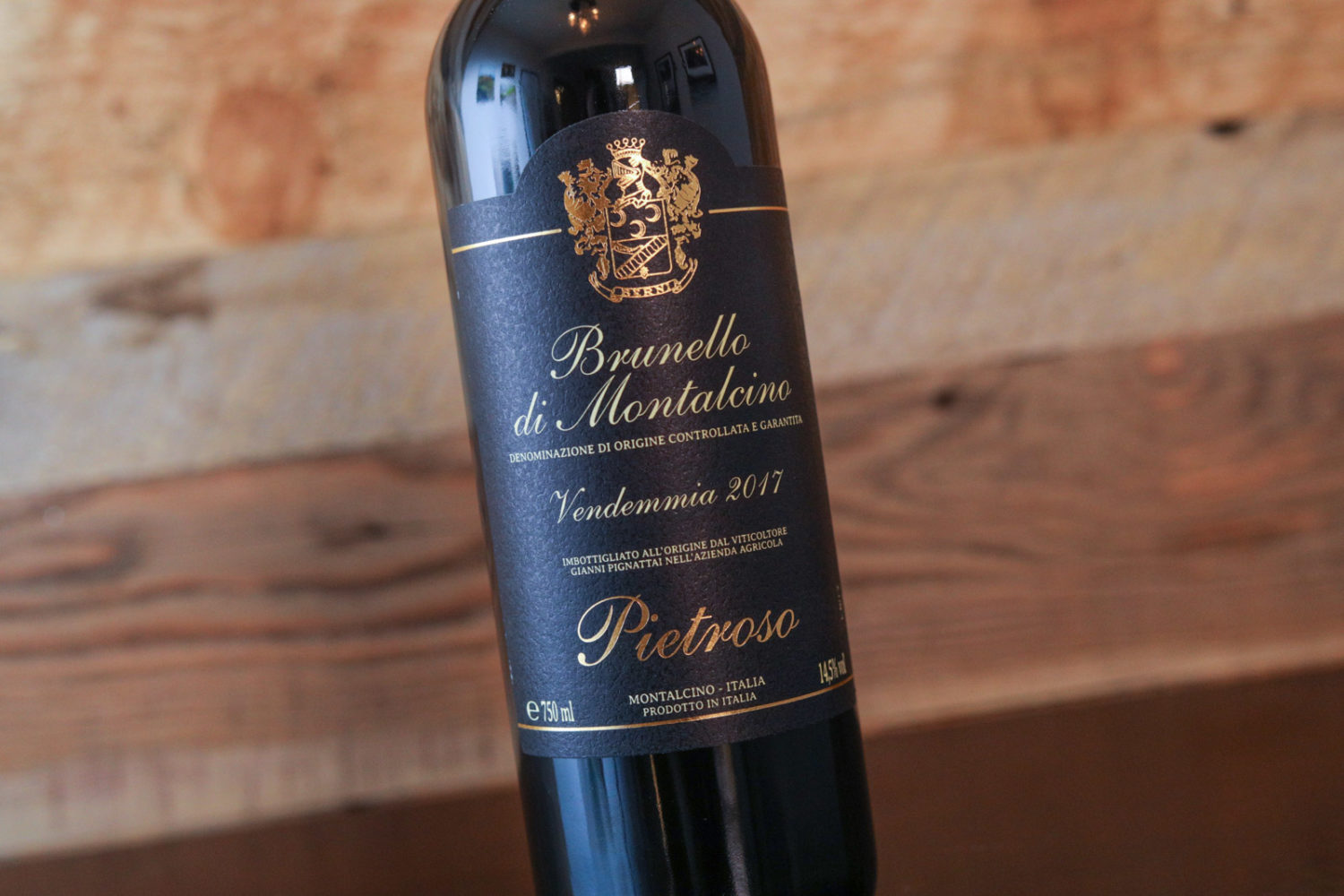
The Marathon Red Wine
The “marathon red wine” is always fun to shop for. This is a wine that can go all night long and never grow dull, or can be recorked and stowed away for revisiting throughout the week.
Normally, I fill this space with a Nebbiolo, but such was the year 2022 that I spent a great deal more time immersed in Brunello di Montalcino, a DOCG I’ve always found to be a mixed bag, and often, overpriced. But lo and behold, I found plenty of reason to finally love Brunello through a series of introductions to conscientious, meticulous producers. Il Marroneto provided the foundation for this new-found love, but it was Pietroso’s elegant 2017 that showed me you can have subtlety and power, lightness and muscles, and not break the bank. I am not sure how long this winery’s wines will stay under the $100 mark, so stock up now.
American Importer: North Berkeley Imports
- 2020 Roterfaden & Roßwag Co-Op Terraces Red
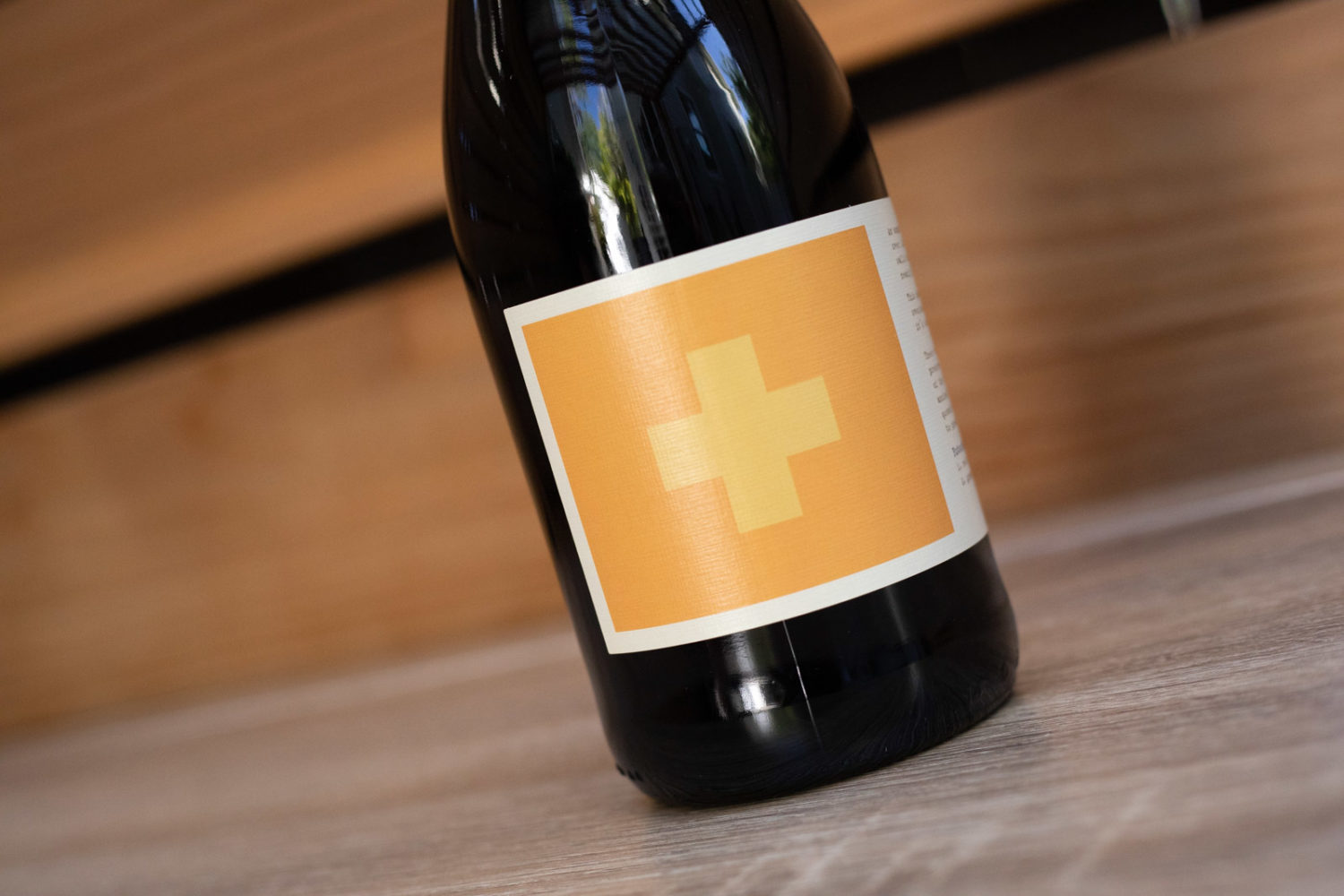
The Heroic Red Wine
Was this wine a declaration of diversity from German wine or just a niche beauty risen from obscurity and borne from unimaginable toil? Probably a bit of both.
Terraces Red is a collaboration between a dynamic naturalist winemaking duo and a local cooperative in Southwest Germany. It had me raving for its weightless body, soft-touch tannins, and quenching acidity which could pair alongside pretty much anything. But it was the story of Roßwag’s vineyard — looking like a Roman amphitheater set in the bitter cold of the Baden — that had me daydreaming most. In a world of convenience and mass-produced everything, wines like this shouldn’t exist. Thank goodness they do.
American Importer: Vom Boden
- 2016 Guy Breton Régnié
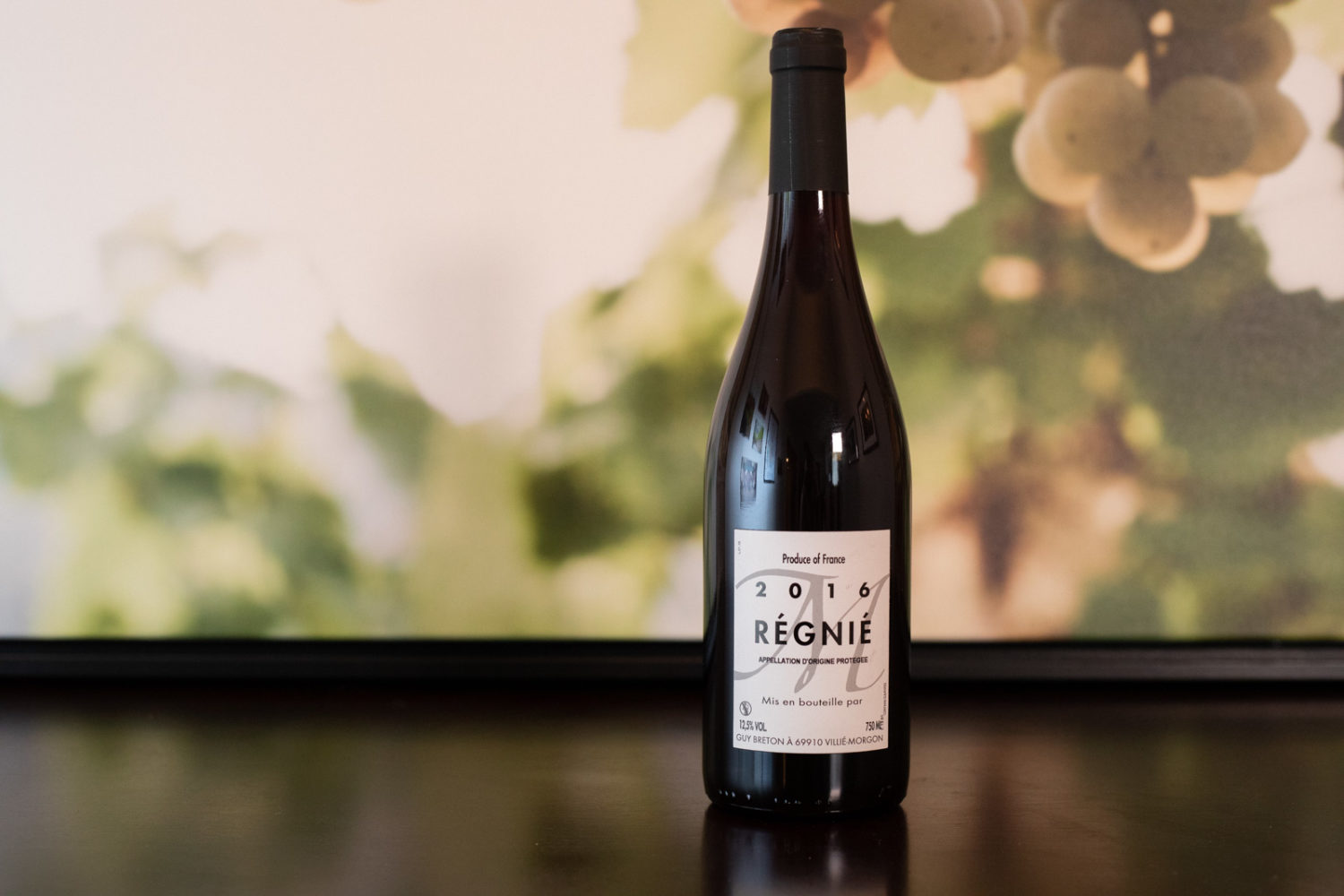
The Classic, Part 1
Every mixed case needs a few classics to satisfy our senses with the familiar. Few places are as classic to me and my generation of wine drinkers as Beaujolais. But it’s usually a Fleurie, a Morgon or maybe a Moulin-à-Vent that grabs the headline. Why not Régnié?
Indeed, why not Régnié? Especially when that wine comes from a master like Guy Breton — one of the original “Gang of Four” who revolutionized what Gamay from Beaujolais could be.
Great Gamay ought to be playful, but it ought to have serious complexity as well. In this case, Breton’s Régnié amazed me for its complexity of fruit flavor — a many layered story of snappy currants and mashed raspberries that spoke to my hedonistic tendencies. Musky and floral notes gave this brilliant wine the dimension it needed to excel.
American Importer: Kermit Lynch Wine Merchant
- 2019 Porta del Vento Catarratto Sicilia
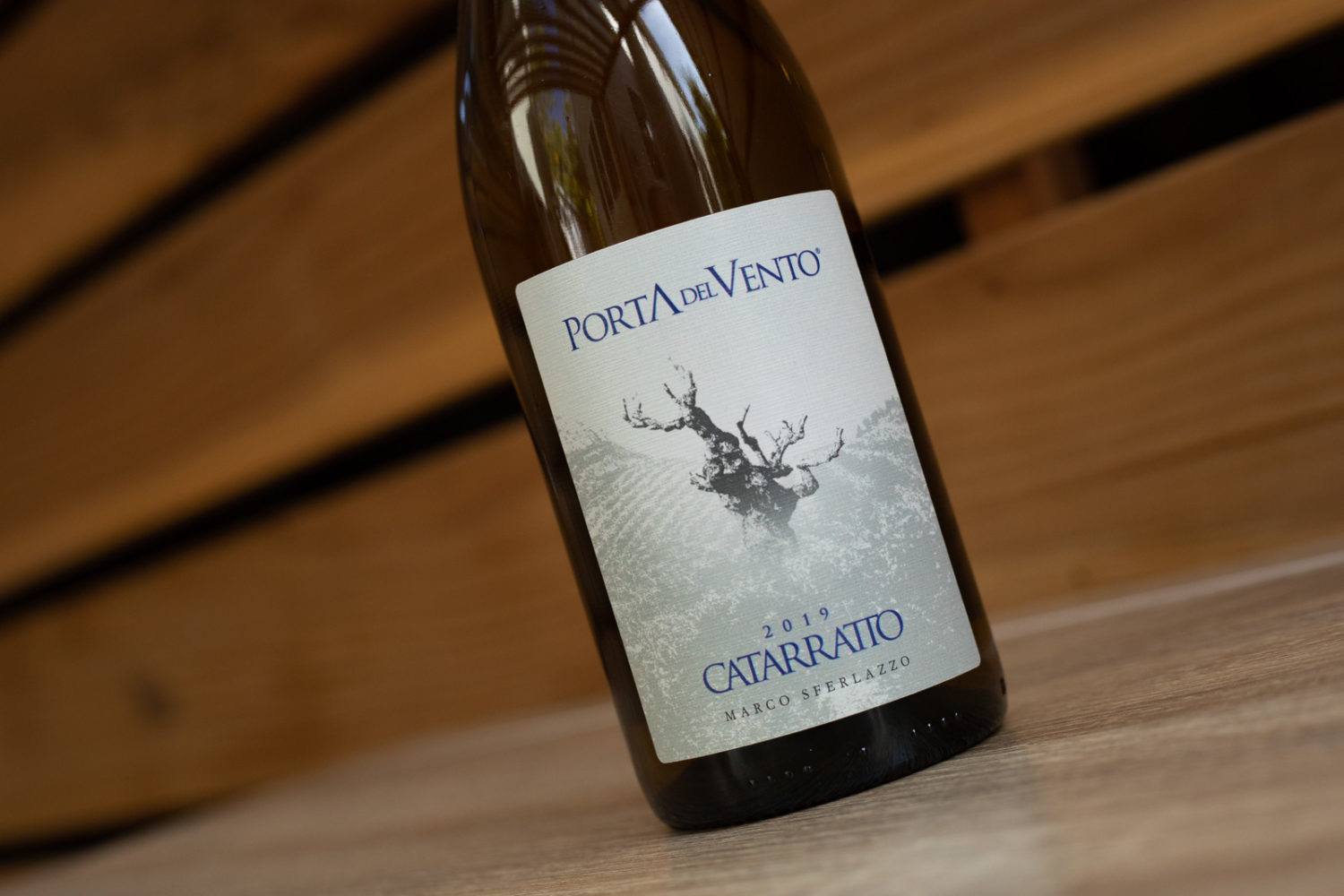
The Kaleidoscopic White Wine
This narrative has been building for years, but I am ready to say it definitively: Sicily produces some of the world’s greatest white wines. In fact, the only other place I can think of that (a) makes so many great white wines and (b) from so many different grapes, is Friuli-Venezia Giulia, clear on the opposite side of Italy.
Like the Friulian white that follows, Marco Sferlazzo’s 2019 Porta del Vento Catarrato had a smidgeon of age to it, which was just enough to relax the wine and tease out those caressing notes akin to herbal tea that I love so much. There was such a kaleidoscope of aromas, textures and sensations with this wine, that I didn’t want to waste a drop.
In Sicily, it is easy to see greatness in the wines from Carricante on Mount Etna and to a lesser extent Zibbibo and Grillo. But Catarratto, the workhorse grape behind long-uninspired Marsala, is clearly on the rise. Marco Sferlazzo isn’t alone in showcasing this grape. It’s just that he is currently showcasing it — and the rise of Sicilian white wine — as well as anyone.
American importer: Steven Graf Wine
- 2018 Raccaro Collio Bianco
The Age-Worthy White Wine
As I noted in my recent First-Taste Guide to Friulano, most consumers with any means to cellar wine will focus on structured reds. But Friulano — and, honestly, all of the fine wines from Collio — have me rethinking the entire strategy. These white wines often have to play the rules of the market: current releases sending a message of “sell and drink now.” But if you could just give them an additional 2 to 3 years of rest … wow, what a transformation! The longer you wait on a cellared wine, the bigger the disappointment when it doesn’t show off. But cellar a bunch of Collio whites for a shorter window? It is an intriguing prospect.
No other wine better underscored this than the structured, complex and mysterious 2018 Collio Bianco from Raccaro, a blend of Friulano, Ribolla Gialla, Sauvignon and Pinot Grigio. Thrillingly complex and forthcoming, this white blend shows deft touches reminiscent of peach skin and lemon rind, an herbaceous quality, and subtle beauty through a long, long finish. “Summer serious,” I wrote in my notes. This is a wine to open on a balmy July evening when you need to transcend the monotony of summer drinking. Or you could save it for a few years and open it with great fanfare and watch it impress. Either way, your odds of coming out a winner at the cellaring game are better. Something to think about.
American Importer: Jan d’Amore Wines
- 2019 Bernard Baudry “Le Domaine” Chinon
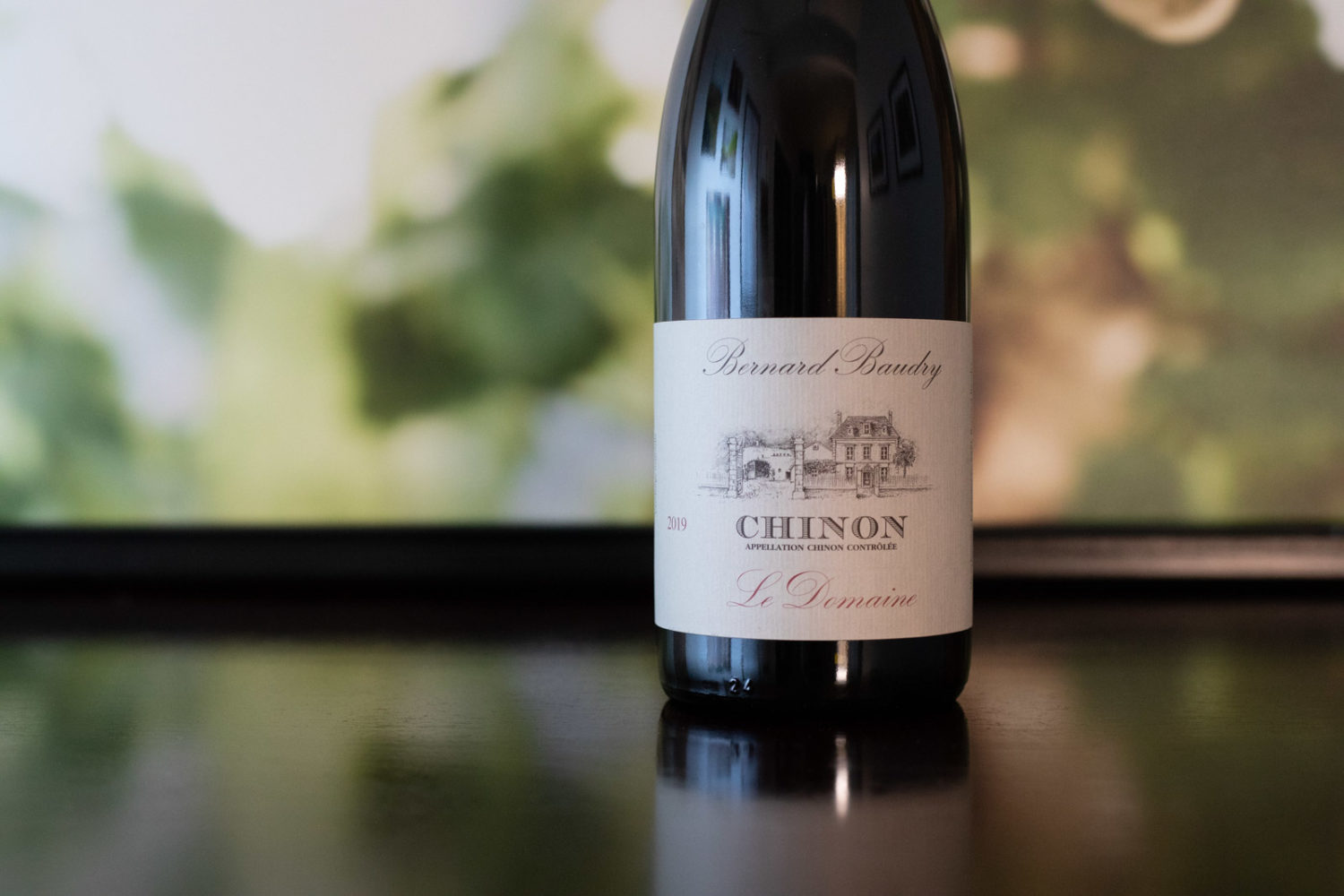
The Classic, Part 2
Should we reach for a Bordeaux or Burgundy glass? This is a conundrum I have always felt when opening a Cabernet Franc, especially one as good as Bernard Baudry’s 2019 Chinon called “Le Domaine.” A parent grape to Cabernet Sauvignon, it would seem that Cab Franc’s structure and body would call for the former, but I usually end up with the later because no other red wine on earth has that wild, botanical aroma akin to raspberry, violets and bell pepper. “Le Domaine” was the most beautifully aromatic wine I encountered all year, with a nose to linger on for hours. Contemplative yet playful, juicy yet rich, dark yet fresh, this wine was so many things at once. However, all the levels seemed perfectly calibrated from first sip to last glass.
We talked about classics with Guy Breton’s Régnié, another Kermit Lynch wine. If you didn’t get the chance to read my interview with the iconic importer (who also happens to be one of the most gifted wine writers of our time), check it out.
American Importer: Kermit Lynch Wine

Subscribe to Opening a Bottle
By supporting Opening a Bottle, you are helping to fund in-depth research and reporting on wines that matter. Plus, you gain access to regular virtual wine classes on topics ranging from wine flaws to sustainability to regional comparison tastings. Starting at just $5/month.
- 2018 Fattoria Rodáno Chianti Classico
The Everyday Red Wine
We all need an everyday red to take home from the wine shop, but that doesn’t mean it needs to be predictable. The wine I couldn’t get enough of this year was Fattoria Rodáno’s Chianti Classico, namely the 2018 vintage. This is carnivore Chianti: a meaty, seemingly tinged-with-iron Sangiovese blend of supreme savoriness (Canaiolo makes up a small portion). The balance between dark cherry tones, orange citrus-like acidity and that leathery, smoky meatiness is a jolt of pure Tuscany to me.
Winemaker Enrico Pozzesi’s consistency with his wines is noteworthy, as a visit in late March confirmed. But without the aspirations of a Riserva– or Gran Selezione-level wine, his benchmark annata roams free with ample generosity. You don’t need to put on a show to open it, but you’ll want to buckle up for the ride.
American importer: Polaner Selections
- 2014 Domaine Dujac Morey-Saint Denis
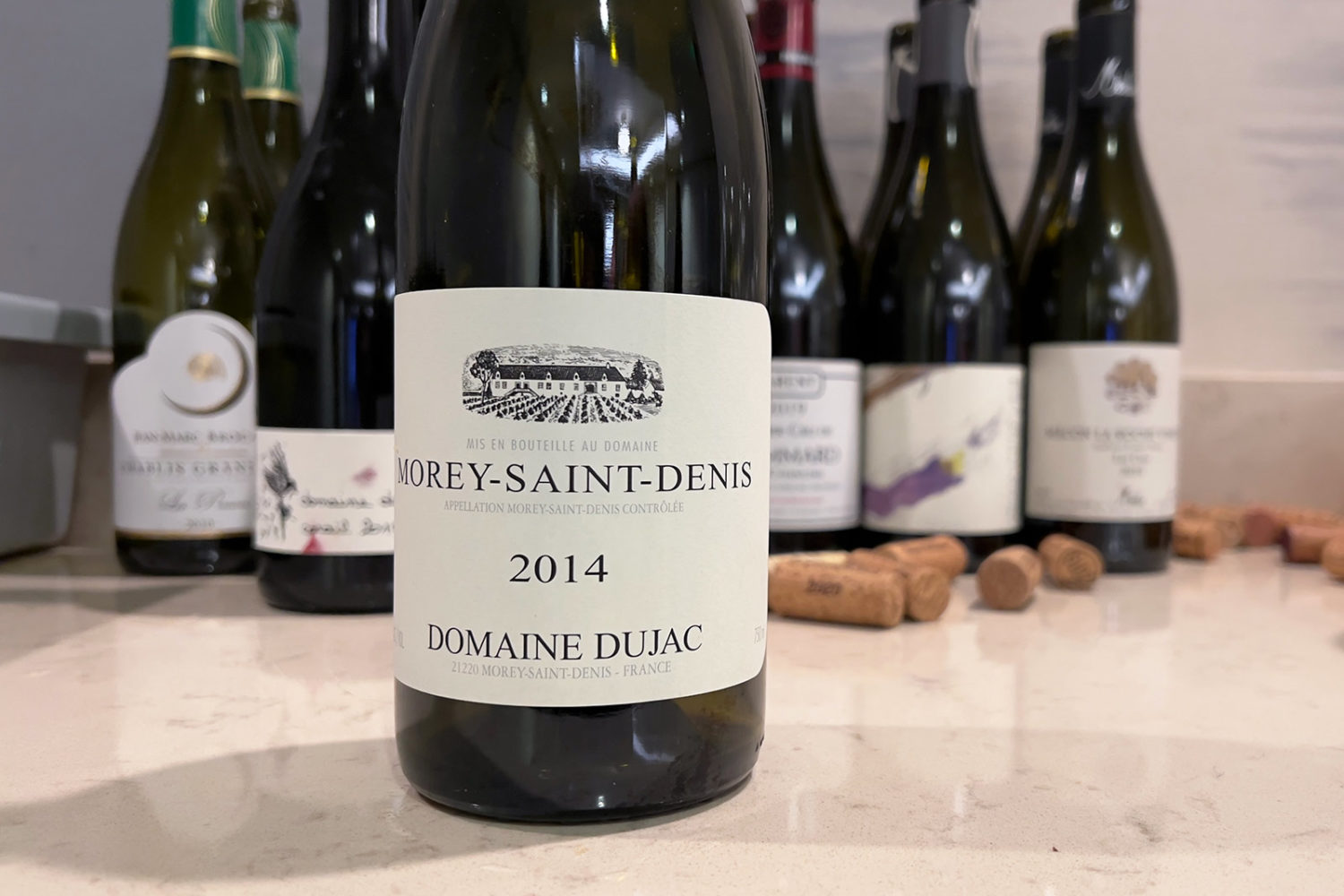
The Superstar for a Reason
Earlier this year, I expanded my coverage on Burgundy with a First-Taste Guide to Morey-Saint-Denis, an appellation whose village wines are either completely overshadowed by its Grand Cru sites, or caught in between the glamour of its more famous village neighbors, Gevrey-Chambertin and Chambolle-Musigny. There is one wrinkle to this: Morey-Saint-Denis’ quartet of iconic producers, whose wines are often regarded as the upper echelon of all of Burgundy.
Domaine Dujac is at the head of that table, and this Morey-Saint-Denis is no ordinary village wine by any measure. Poured at the Boulder Burgundy Festival during a fascinating panel discussion on sustainability, this was my first taste of Dujac. Rather than have stars in my eyes, I approached it cautiously. But with one whiff, one sip, I couldn’t hold back. This wine was a portal to some place else.
Pert, floral and minty on the nose, this lovely Morey-Saint-Denis is appealing throughout, with so much complexity and intrigue, it is rather astonishing that there is another two levels of vineyard above it (Premier and Grand Cru). Its lean and quenching presence on the palate is immediately refreshing, while having ample structure to pair. My taste came at the eight-year mark. I imagine that this not-so-humble village wine has another eight years in it.
American Importer: The Sorting Table
- 2007 Gravner Vino Rosso Breg
The One-Life-to-Live Red Wine
“This wine will drive you crazy waiting for it to mature,” Mateja Gravner, the daughter of iconic Friulian winemaker Josko Gravner, told me as she poured their 2007 Breg Rosso. But at the 15-year mark, she felt it was ready, so she was sharing. And I am so glad she did.
Gravner is best known for a macerated orange wine made from the thick-skinned Ribolla Gialla from their beautiful, biologically rich vineyards on the border between Italy and Slovenia. The wine is fermented in clay vessels sunk into the ground, a process than Josko Gravner helped resurrect from post-Soviet Georgia around the turn of the millennium. Yet seemingly little attention is paid to Breg Rosso, a miniscule-production red wine made from Pignolo and aged for 5 years in 10 to 13hL Slavonian oak botti. For those who do know, the wine is highly coveted, and I nearly didn’t list it in the Top 12 because of its exceptional cost (around $250).
But retracing my steps mentally and emotionally, all I can remember was how enthralled I was by Breg Rosso’s personality. It has a wild character reminding me of dried cherries, anise seed, blood orange and pipe tobacco, which seemed more Southern Italian than Northern. Then on the palate, it was more Northern Italian than Southern. I fumbled for a reference, because the texture was so familiar. “It sometimes reminds me of Valtellina,” Mateja said, which is when things clicked into place. Yes, yes it does. Still, it has its own personality with those flavors, and an athletic sense of structure through the middle. “A wine with core muscles,” I wrote in my notes, trying to capture how it felt. Maybe not my best effort with pen and paper, but that feeling of direct power mixed with the loose ability to venture anywhere the wine took me … that is something I won’t soon forget about Breg Rosso.
American Importer: Rosenthal
- 2020 Chanterêves “Les Monts de Fussey” Bourgogne Hautes Côtes de Beaune Blanc
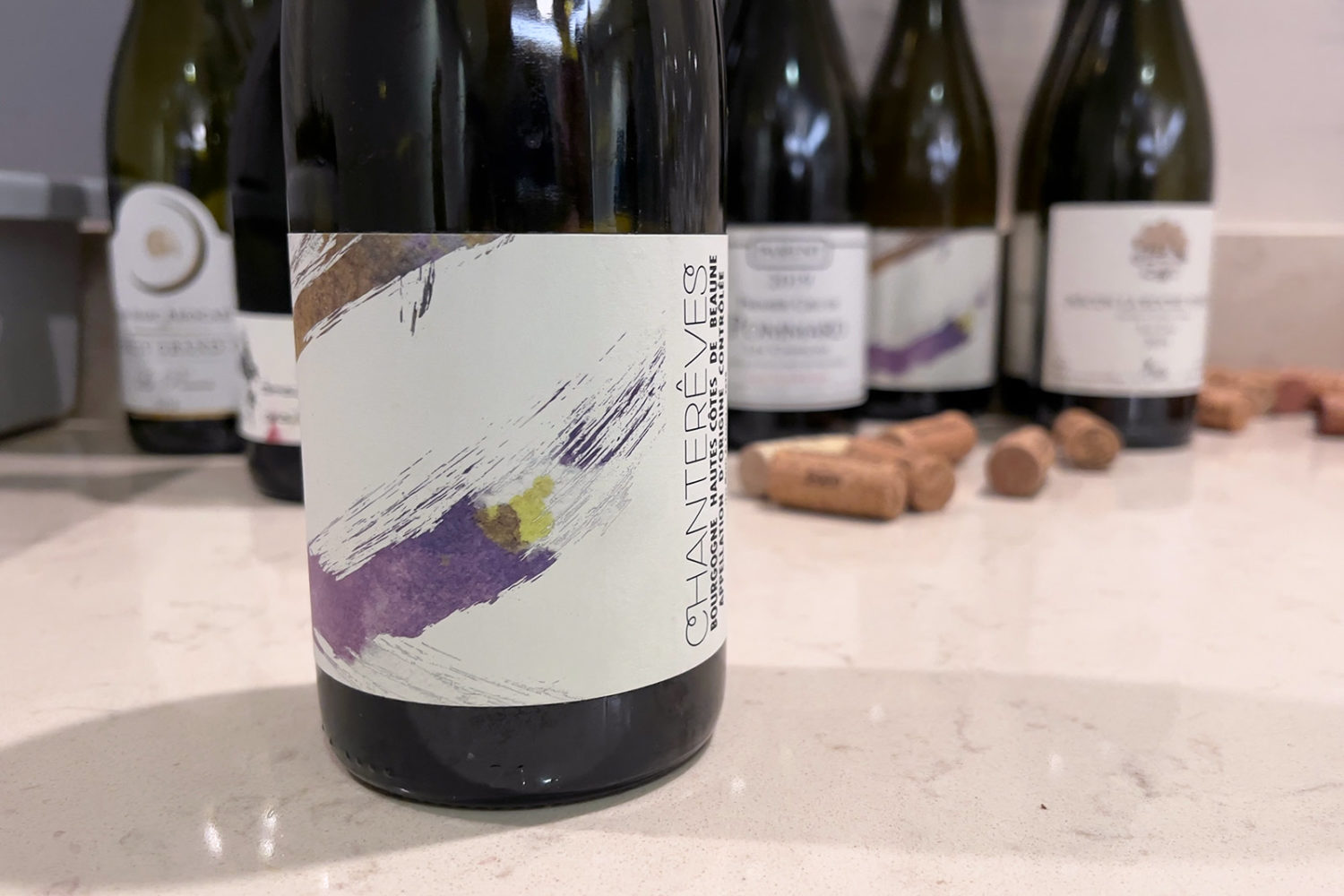
The Future of White Wine, Part 1
If Bernard Baudry’s “Le Domaine” Chinon was the red wine that captivated my nose the most, Chanterêves’ “Les Monts de Fussey” Bourgogne Hautes Côtes de Beaune Blanc was its equivalent on the white wine side of the year. I got nostalgic for outdoor places while breathing in this wine in a rather sterile hotel conference room. There was bright apple and cardomon spice-like tones, but also an aroma I’ve only encountered while exploring a river bank somewhere. Don’t quote me on this, because who knows if you’d experience a similar exacting sense of place, but to make a wine capable of releasing such a beautiful memory … I mean, that’s why we’re here, right? To escape and find solace from a few simple sips.
Chanterêves also proved to be one of the most interesting estates I learned about this year. Working in the Hautes Côtes de Beaune, the wife-and-husband team of Tomoko Kuriyama and Guillaume Bott are upending a lot of conventions in Burgundy by spraying milk instead of copper on their plants to combat downey mildew. They are also employing phytotherapy (the use of herbs and plants as medicines) to treat maladies in their vines, and they actively encourage biodiversity. One other way they are upending things? They are making wines that have us talking about the Hautes Côtes de Beaune for a change.
American importer: Becky Wasserman
- 2019 Michael Wenzel “Furmint Under Flor”
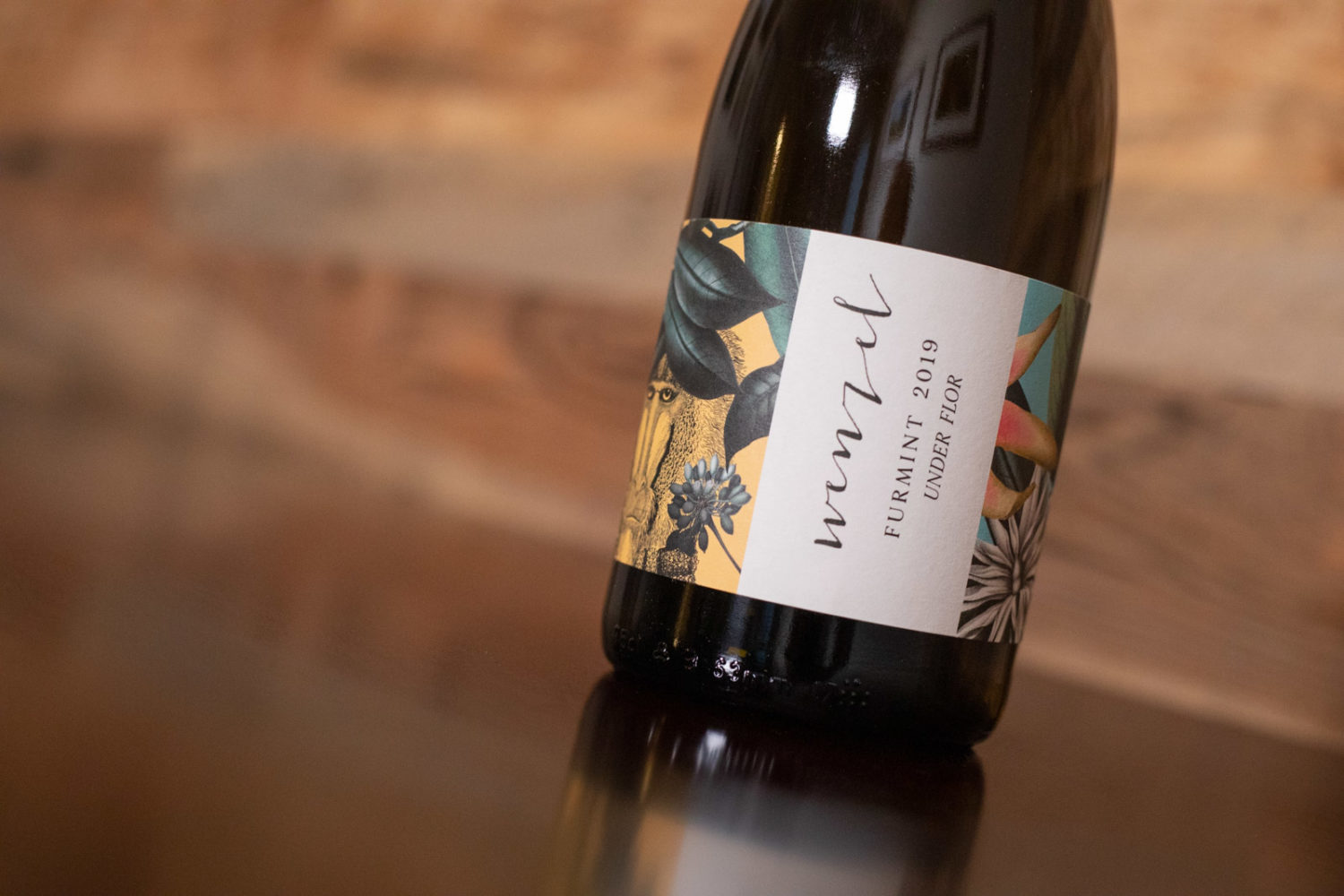
The Future of White Wine, Part 2
It was a really tough call this year between selecting this wine and the eventual No. 1, but the nice thing about the editorial construct of this feature is that they both end up in the mixed case.
It doesn’t happen often, but sometimes when you judge a book by its cover, the story inside validates your decision. That’s what happened with this wine, which I will admit I bought on a whim because of its wild tropical flora-and-fauna motif. Well, that, plus the fact that it is an Austrian Furmint, and under $30. I felt like I had nothing to lose.
But “nothing to lose” quickly turned to “everything to gain” when I opened the bottle. Here was an aromatic profusion I’ve never before encountered: something like honeycomb, fresh mint, grapefruit zest, leather and saltiness. Perfectly dry and persistent on the finish, this aged-under-flor white wine felt not only like the most original wine I’ve tasted in years, but one of the most quenching too. We need clever and intelligent winemakers like Michael Wenzel (and Piero Lanza, next, as well as Tomoko Kuriyama and Guillaume Bott above) to push the boundaries and challenge our senses more often. For that reason, I couldn’t be more pleased with the top 3 wines this year.
American Importer: Winemonger
- 2013 Poggerino “Millesimo” Vino Spumante Rosé Pas Dosé
The Future of Sparkling Wine
At the end of my tasting at Poggerino on March 31, I stepped back out into the drizzly Chianti Classico air and told myself you likely just tasted the best wine of the year … The problem was, I didn’t know if it was Piero Lanza’s spumante of Sangiovese called “Millesimo” or his Chianti Classico Riserva called “Bugialla” (or which vintage of “Bugialla” … we tasted five of them).
What had transpired was one of the three greatest at-winery tastings of my career. The other two? ARPEPE and Domaine de la Romanée-Conti. That’s some pretty choice company. Even a tasting at Biondi-Santi a few days later did not rival what I encountered with Piero in his small, intimate winery.
Ultimately, I have to settle on “Millesimo” as the top wine of the year: only the second sparkling wine to top my list since I started doing this in 2014. It goes without saying that Chianti Classico is not sparkling wine territory. The skill it takes to out-champagne Champagne when you are dealing with a diva grape like Sangiovese in a neighborhood where almost all of your peers lack the equipment and institutional knowledge for traditional-method sparkling wine … that is no small feat. I found myself beguiled by the savory streak in “Millesimo” that was undeniably coming from this fiercely Italian grape. It was as though everything I could want from such a wine — the lees notes, the creaminess, the mellow froth, the depth, the zingy acidity, the massive aromas — was there in exactly the right place. That Sangiovese meatiness was like a wink telling me where it came from. Do you know many sparkling wines that can do that? I don’t.
“I might make only sparkling wine someday,” Lanza had told me when he started the tasting with this wine. I immediately understood his passion, but there was something else I understood as well: his intelligence. His Chianti Classico wines are among the finest I’ve tasted as well, so let’s hope he finds a way to satisfy his hunger for the sparkling-wine craft while continuing to make “Bugialla” for the ages.
American Importer: Volio Imports
Note: Some of these wines were provided as samples or tasted without cost during a winery visit. They include: Pietroso, Roterfaden & Roßwag, Racarro, Bernard Baudry, Rodáno, Gravner and Poggerino. All other wines were either paid for with our editorial budget or tasted as part of a wine trade event. Learn more about our editorial policy.


